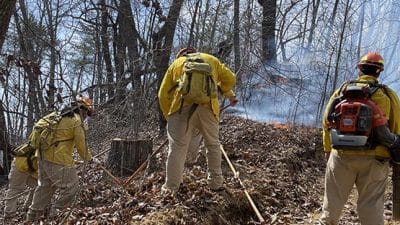
According to NIDCD, aphasia is a disorder that results from damage to portions of the brain that are responsible for language. For most people, these are areas on the left side (hemisphere) of the brain. Aphasia usually occurs suddenly, often as the result of a stroke or head injury, but it may also develop slowly, as in the case of a brain tumor, an infection, or dementia. The disorder impairs the expression and understanding of language as well as reading and writing. Aphasia may co-occur with speech disorders such as dysarthria or apraxia of speech, which also result from brain damage.
Symptoms
A person with aphasia may:
§ Speak in short or incomplete sentences
§ Speak in sentences that don’t make sense
§ Speak unrecognizable words
§ Not comprehend other people’s conversation
§ Interpret figurative language literally
§ Write sentences that don’t make sense
The severity and scope of the problems depend on the extent of damage and the area of the brain affected. Some people may comprehend what others say relatively well but struggle to find words to speak. Other people may speak more clearly than they can write.
Your doctor may refer to one of three broad categories of aphasia — nonfluent, fluent and global — that describes what region of the brain was damaged and how communication is usually affected.
The two primary language networks for most people are located in the brain’s left hemisphere.
§ Nonfluent aphasia. Damage to the language network near the left frontal area of the brain usually results in Broca aphasia. It’s also called nonfluent aphasia. People with this disorder struggle to get words out, speak in very short sentences and leave out words. A person might say, “Want food” or “Walk park today.” Although the sentences aren’t complete, a listener can usually decipher the meaning. A person with Broca aphasia may comprehend what other people say to some degree. They’re often aware of their own difficulty in communicating and may get frustrated with these limitations.
§ Fluent aphasia. Wernicke aphasia is the result of damage to the language network in the middle left side of the brain. It’s often called fluent aphasia. People with this form of aphasia may speak fluently in long, complex sentences that don’t make sense or include unrecognizable, incorrect or unnecessary words. They usually don’t comprehend spoken language well and often aren’t aware of their own difficulty communicating.
§ Global aphasia. Global aphasia results from extensive damage to the brain’s language networks. People with global aphasia have severe disabilities with expression and comprehension.
What is apraxia of speech?
Apraxia of speech, also known as verbal apraxia or dyspraxia, is a speech disorder in which a person has trouble saying what he or she wants to say correctly and consistently. It is not due to weakness or paralysis of the speech muscles (the muscles of the face, tongue, and lips). The severity of apraxia of speech can range from mild to severe.
What are the types and causes of apraxia?
There are two main types of speech apraxia: acquired apraxia of speech and developmental apraxia of speech. Acquired apraxia of speech can affect a person at any age, although it most typically occurs in adults. It is caused by damage to the parts of the brain that are involved in speaking, and involves the loss or impairment of existing speech abilities. The disorder may result from a stroke, head injury, tumor, or other illness affecting the brain. Acquired apraxia of speech may occur together with muscle weakness affecting speech production (dysarthria) or language difficulties caused by damage to the nervous system (aphasia).
What are the symptoms?
People with either form of apraxia of speech may have a number of different speech characteristics, or symptoms. One of the most notable symptoms is difficulty putting sounds and syllables together in the correct order to form words. Longer or more complex words are usually harder to say than shorter or simpler words. People with apraxia of speech also tend to make inconsistent mistakes when speaking. For example, they may say a difficult word correctly but then have trouble repeating it, or they may be able to say a particular sound one day and have trouble with the same sound the next day. People with apraxia of speech often appear to be groping for the right sound or word, and may try saying a word several times before they say it correctly. Another common characteristic of apraxia of speech is the incorrect use of “prosody” — that is, the varying rhythms, stresses, and inflections of speech that are used to help express meaning.
Where can I find more information?
NIDCD maintains a directory of organizations that can answer questions and provide printed or electronic information on apraxia of speech. Please see the list of organizations at www.nidcd.nih.gov/directory.
Use the following keywords to help you search for organizations that are relevant to apraxia of speech:
· Apraxia
· Speech-language pathologists
For more information, additional addresses and phone numbers, or a printed list of organizations, contact:
NIDCD Information Clearinghouse
1 Communication Avenue
Bethesda, MD 20892-3456
Toll-free Voice: (800) 241-1044
Toll-free TTY: (800) 241-1055
Fax: (301) 770-8977
E-mail: [email protected]
I have found the following sites very helpful. If you desire to see a keyboard example, please go here: www.aphasia.com.
There is also the Aphasia Hope Foundation to look at for video presentations: www.aphasiahope.org/media_resource.jsp?id=34.
The National Aphasia organization can be found here: www.aphasia.org/Aphasia%20Facts/aphasia_faq.html.
I have attached two video presentations if anyone has issues with reading:
– www.youtube.com/watch?v=Bk13HLma2CI
– www.youtube.com/watch?v=kaVLy_5WhTM&feature=related
– Column by Chris DeWald










